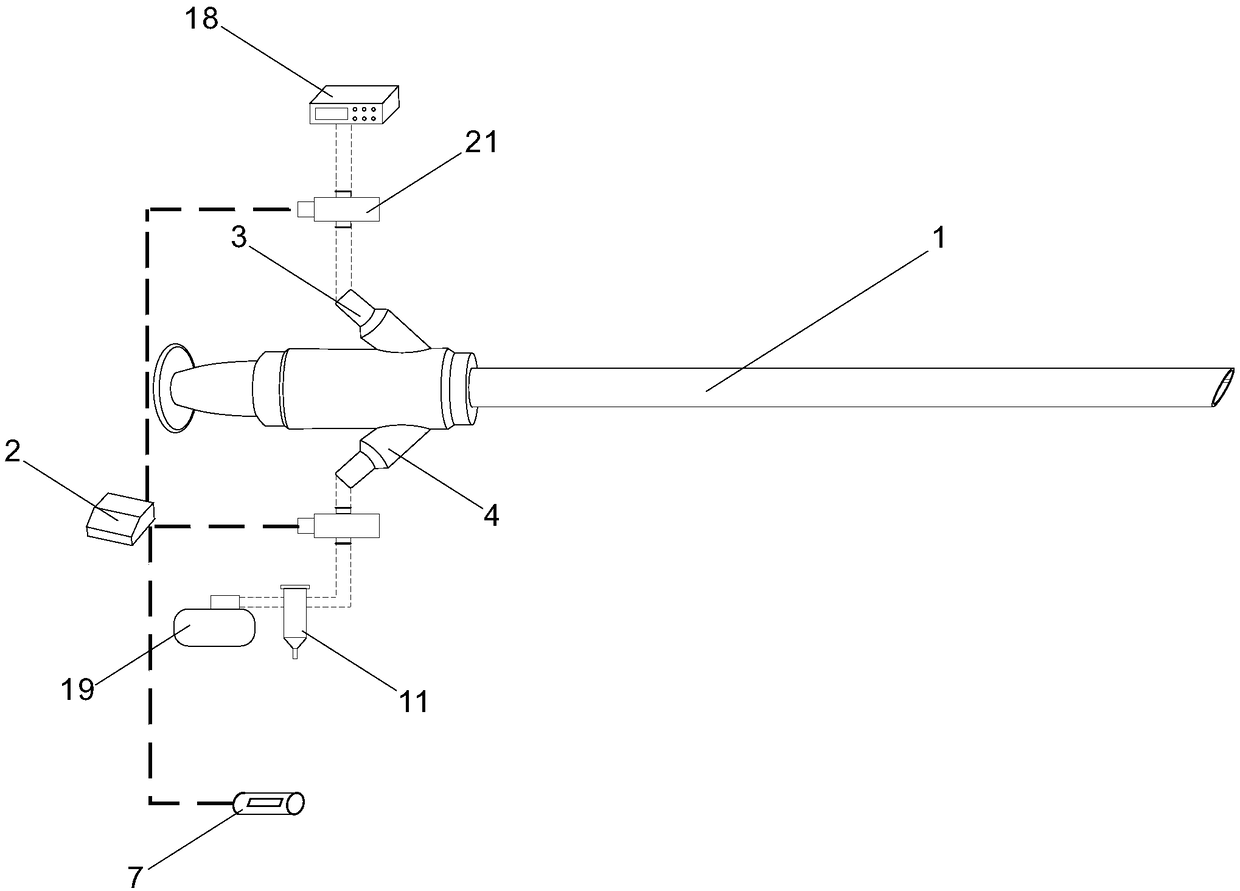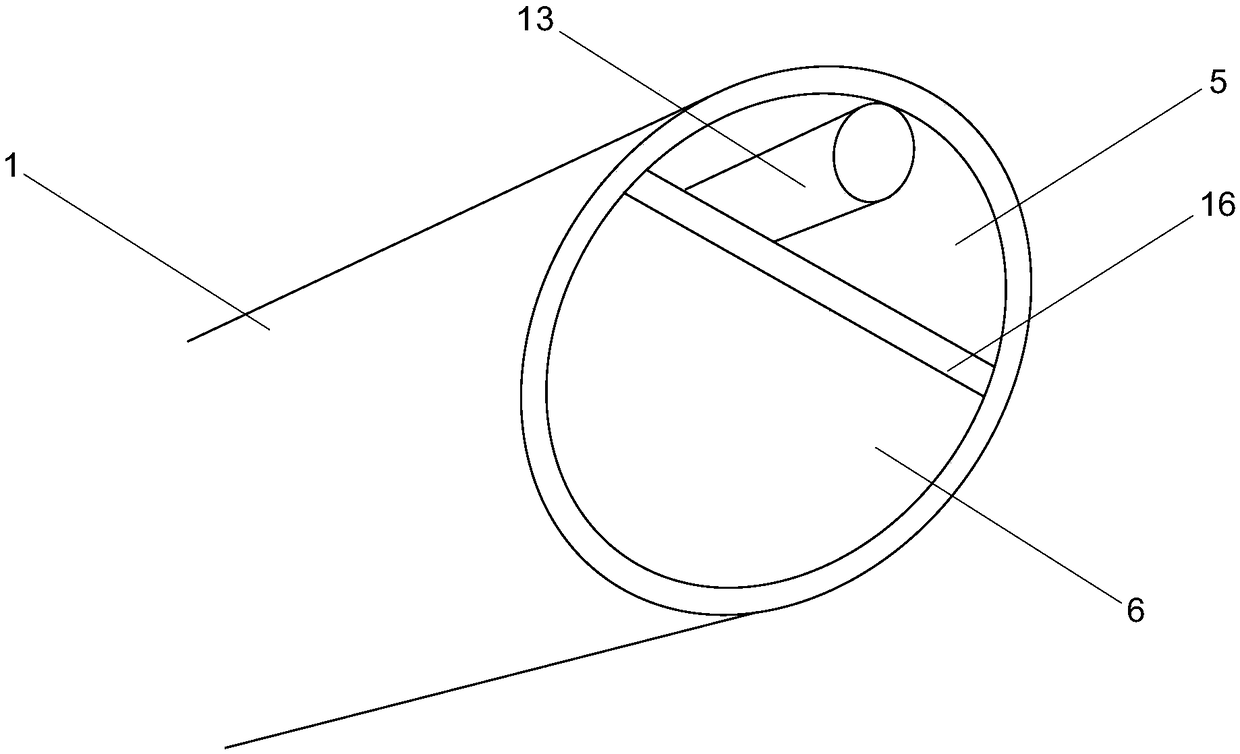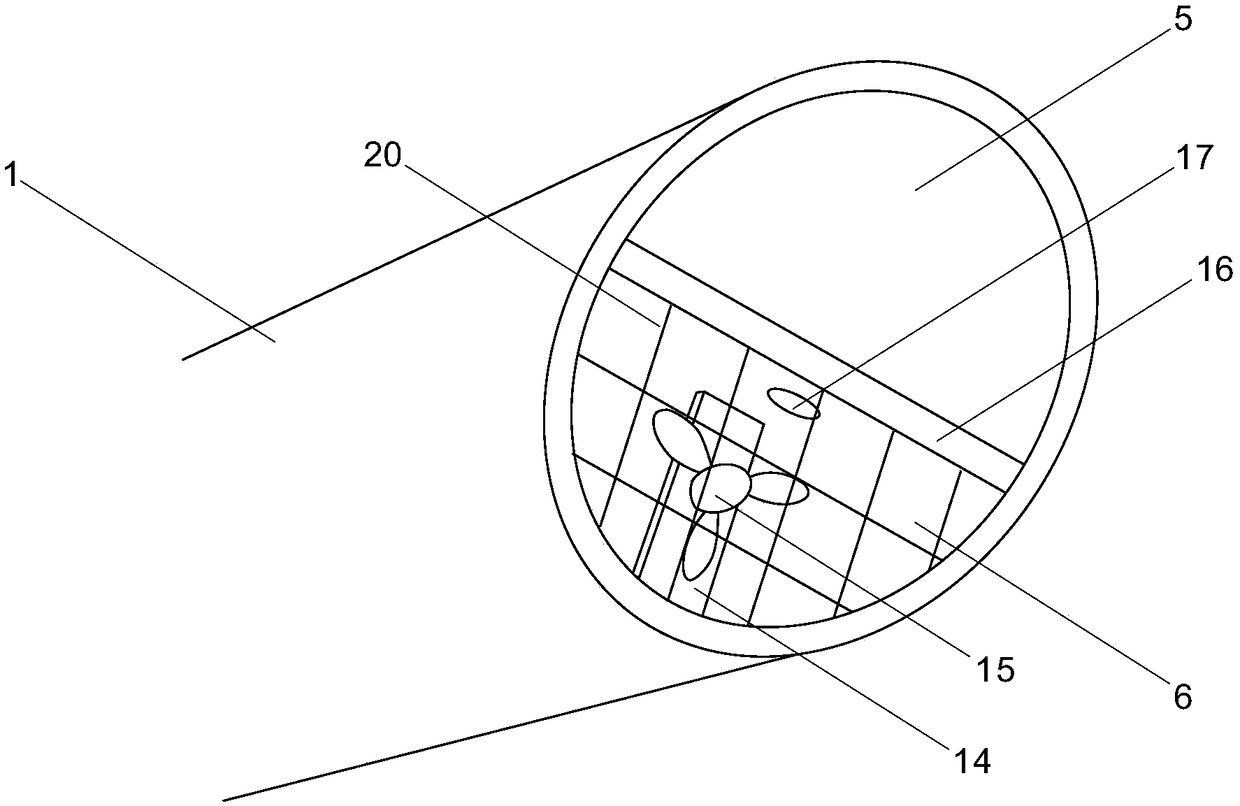Human necrotic tissue remover
A technology of necrotic tissue and remover, which is applied to suction instruments, fluid jet scalpels, endoscopic cutting instruments, etc., can solve the problems of incapable of necrotic tissue and pus being discharged from the body, and achieves improved debridement and efficiency. , the effect of improving the degree of functional integration
- Summary
- Abstract
- Description
- Claims
- Application Information
AI Technical Summary
Problems solved by technology
Method used
Image
Examples
Embodiment 1
[0027] Such as figure 1 , figure 2 Shown, a human necrotic tissue remover for debridement of pancreatitis. This human necrotic tissue remover comprises a tube body 1, a controller 2 and an internal pressure external monitor 7, the tube body 1 is provided with an air inlet 3 and an outlet 4, and the tube body 1 is provided with a partition plate 16 Separated flushing chamber 5 and absorption chamber 6, the air inlet 3 communicates with the flushing chamber 5 and is connected to the positive pressure air source through the trachea, the positive pressure air source is a carbon dioxide insufflation machine 18, and the outlet 4 is connected to the absorption chamber The channel 6 communicates with and is connected to the negative pressure gas source through the air pipe, the negative pressure gas source is an air pump 19, and the gas valve 21 is respectively arranged on the air inlet 3 and the discharge port 4, and the gas valve 21 is a gas on-off valve, and the gas valve 21 is ...
Embodiment 2
[0030] The cross-sectional area of the absorption channel 6 is three times that of the flushing channel 5 . The gas valve 21 is a pressure reducing valve. All the other are with embodiment 1. When the internal pressure external monitor 7 detects that the internal pressure of the human body is too high, the controller 2 controls the air valve on the air inlet 3 to switch to a decompression state, and the pressure-reducing gas continues to be input, while the air valve on the outlet 4 remains normal When the internal pressure of the human body returns to normal, the controller 2 controls the air valve on the air inlet 3 to resume normal conduction; when the internal pressure monitor 7 detects that the internal pressure of the human body is too small, the controller 2 controls the air The air valve on 3 remains in normal conduction, and the pressure gas continues to be input, while the air valve on outlet 4 is switched to a decompression state. When the internal pressure of th...
Embodiment 3
[0032] Such as image 3 , Figure 4 As shown, the end of the absorption cavity 6 is provided with a large tissue blocking net 20 . A radial support rod 14 is fixed near the end of the absorption cavity 6, and a cutter 15 is rotatably connected to the radial support rod 14. The cutter 15 includes a rotating shaft and twisted fan blades, and the twisted fan blades are evenly distributed on the rotating shaft. The partition 16 in front of 15 is provided with a communication hole 17 connecting the flushing channel 5 and the absorption channel 6 , and the communication hole 17 is obliquely directed to the cutter 15 .
[0033] The intake air flow in the flushing chamber 5 is diverted from the communication hole 17 to impact the front of the twisted fan blade of the cutter 15, and the exhaust air flow in the absorption chamber 6 also acts on the front of the twisted fan blade, thereby driving the cutter The rotating shaft of 15 rotates directionally, and the twisted fan blade also ...
PUM
 Login to View More
Login to View More Abstract
Description
Claims
Application Information
 Login to View More
Login to View More - R&D
- Intellectual Property
- Life Sciences
- Materials
- Tech Scout
- Unparalleled Data Quality
- Higher Quality Content
- 60% Fewer Hallucinations
Browse by: Latest US Patents, China's latest patents, Technical Efficacy Thesaurus, Application Domain, Technology Topic, Popular Technical Reports.
© 2025 PatSnap. All rights reserved.Legal|Privacy policy|Modern Slavery Act Transparency Statement|Sitemap|About US| Contact US: help@patsnap.com



